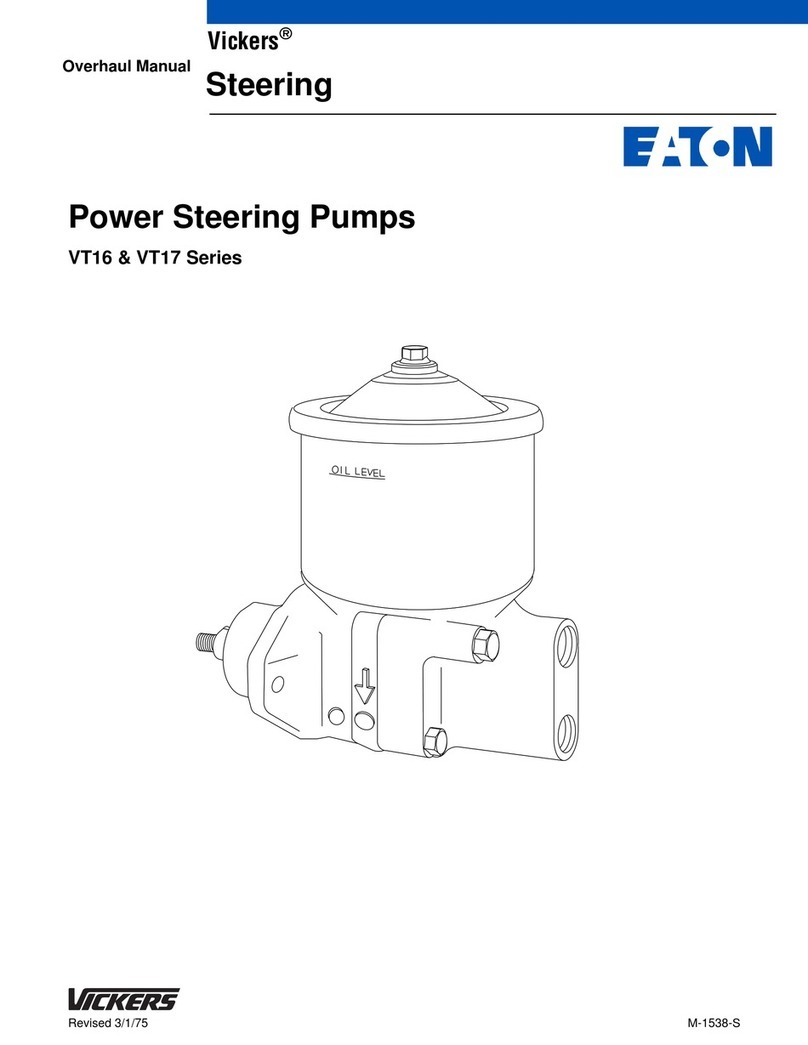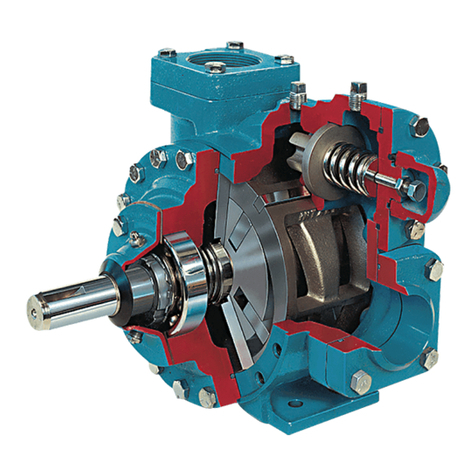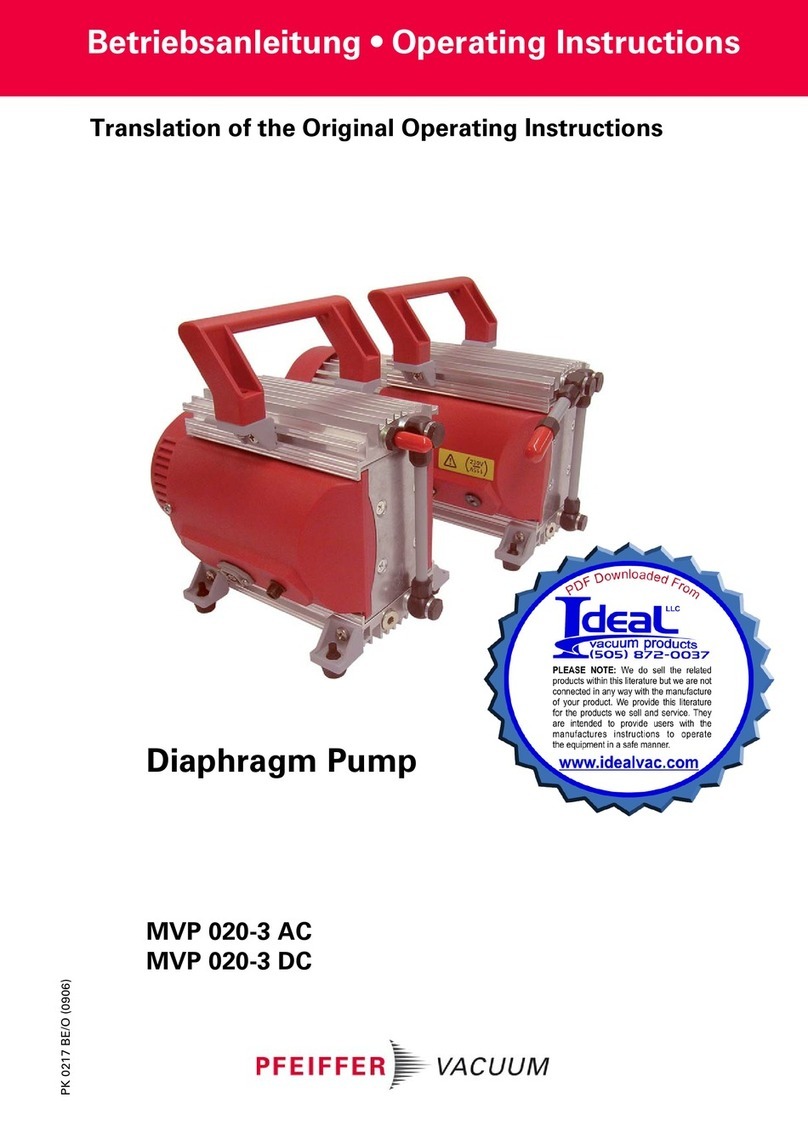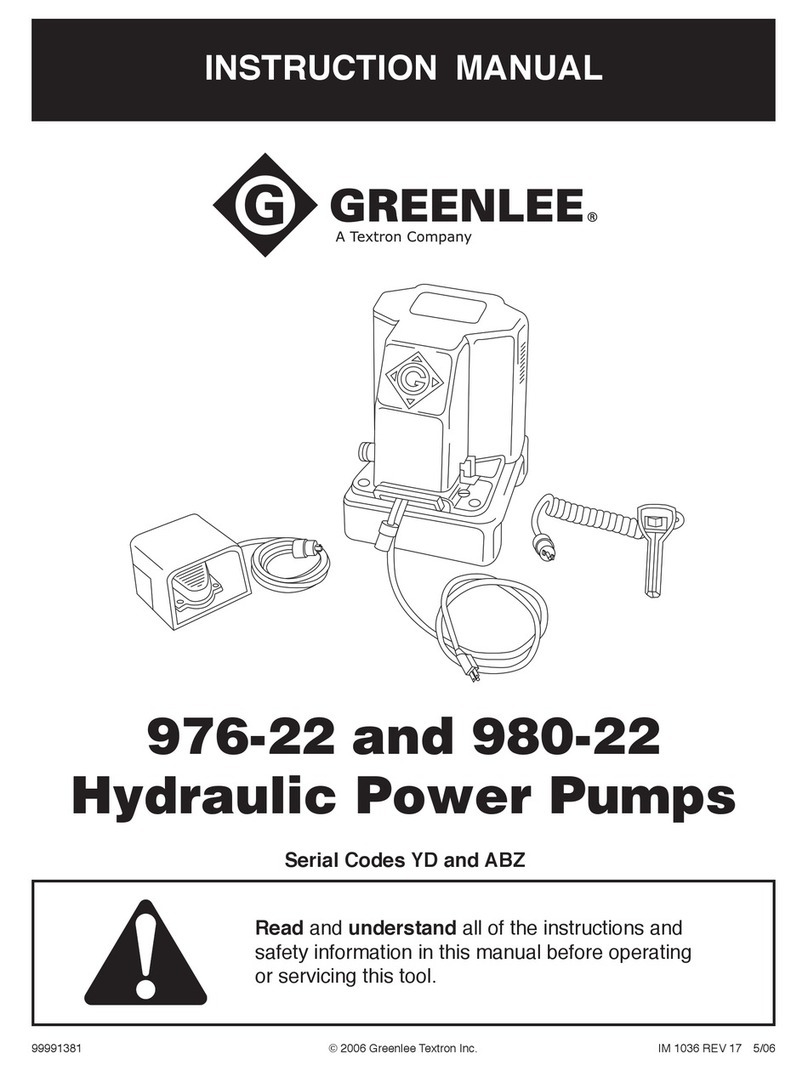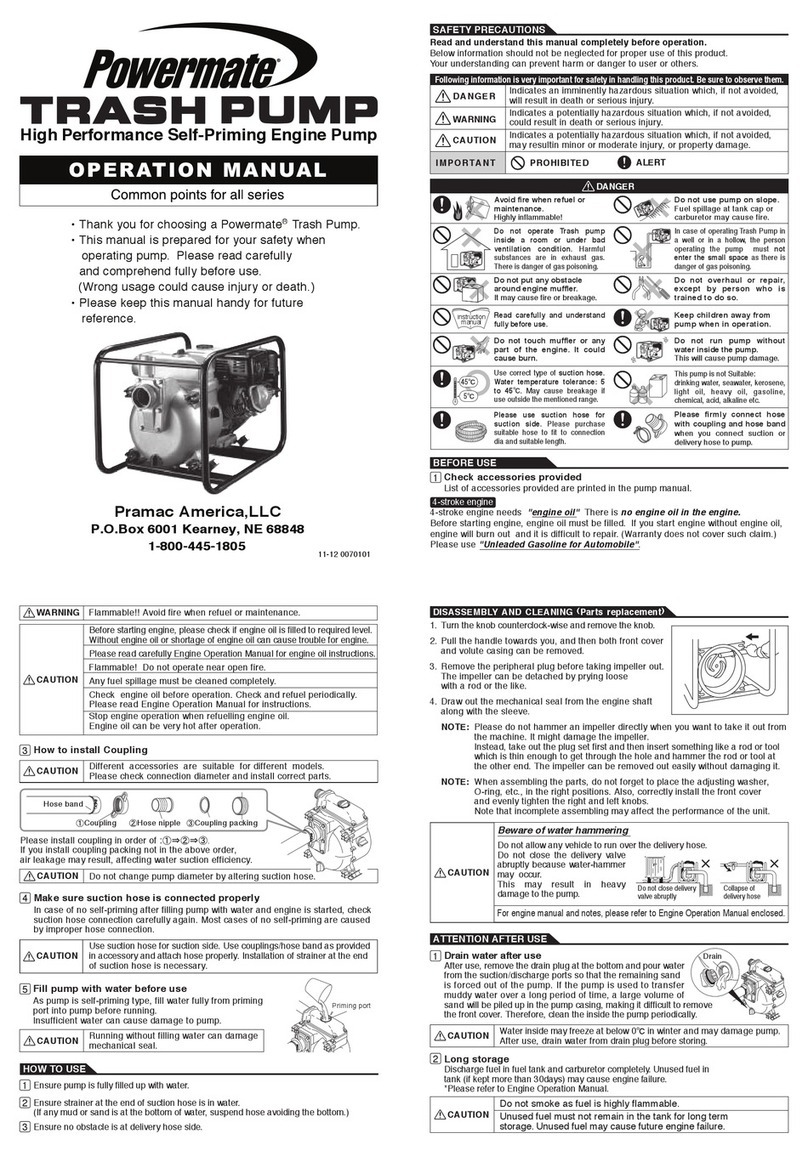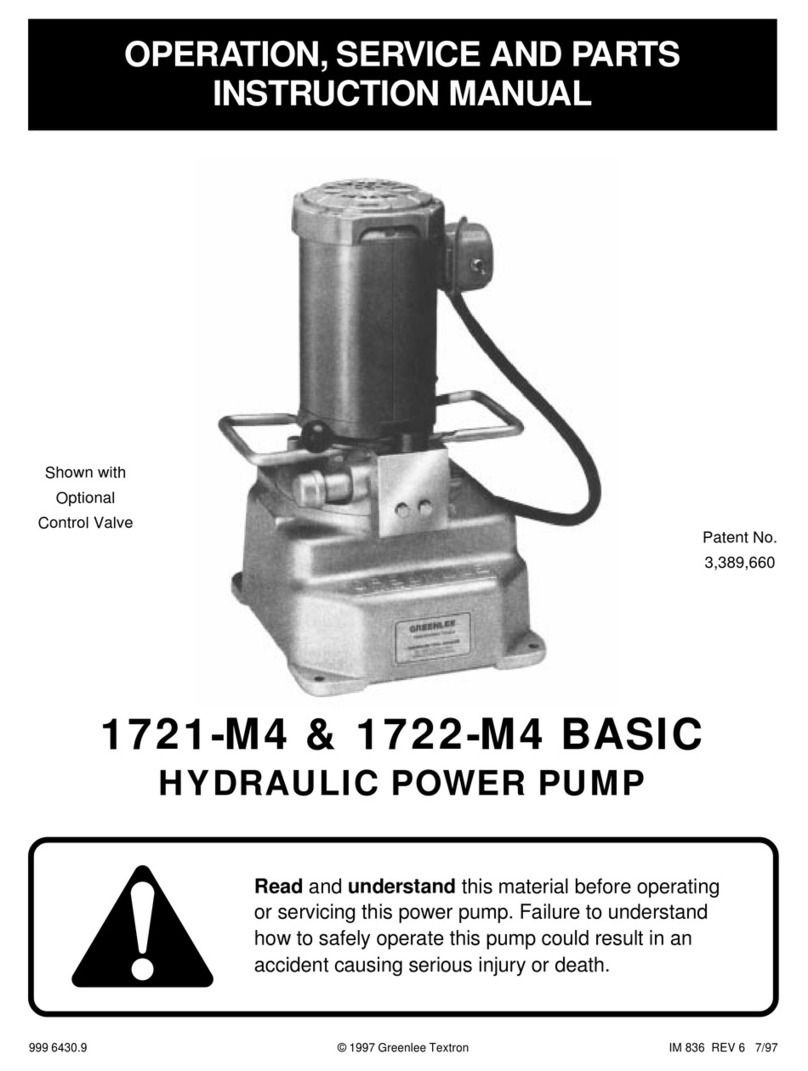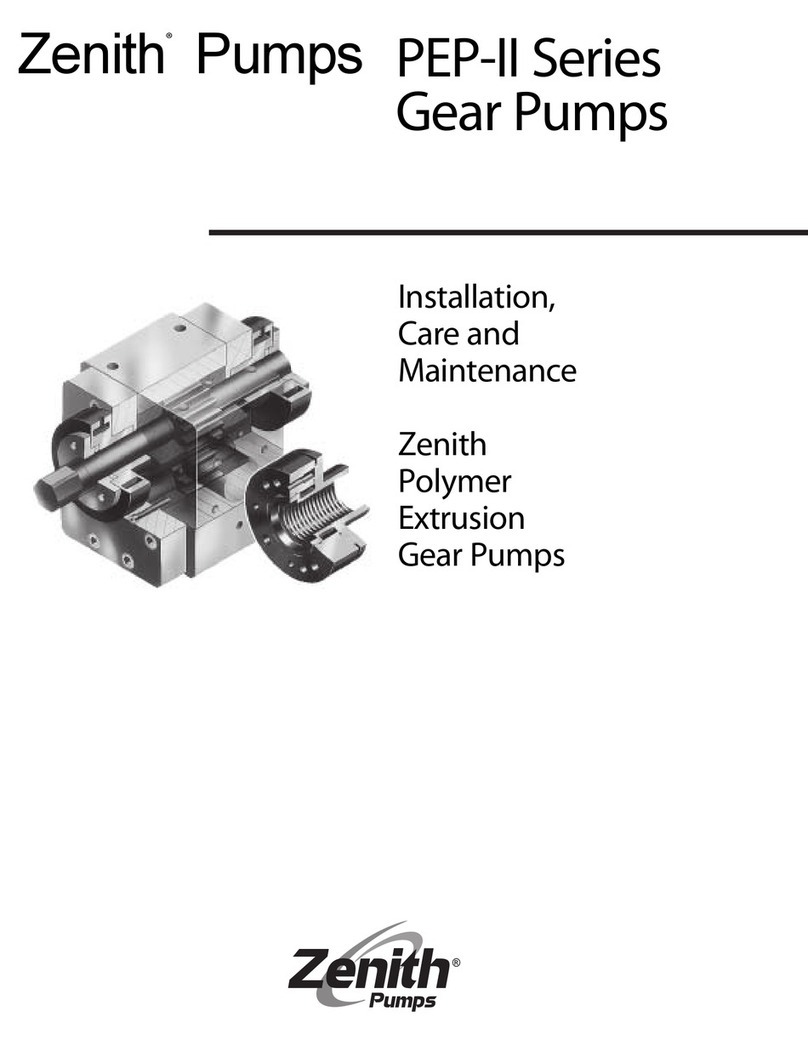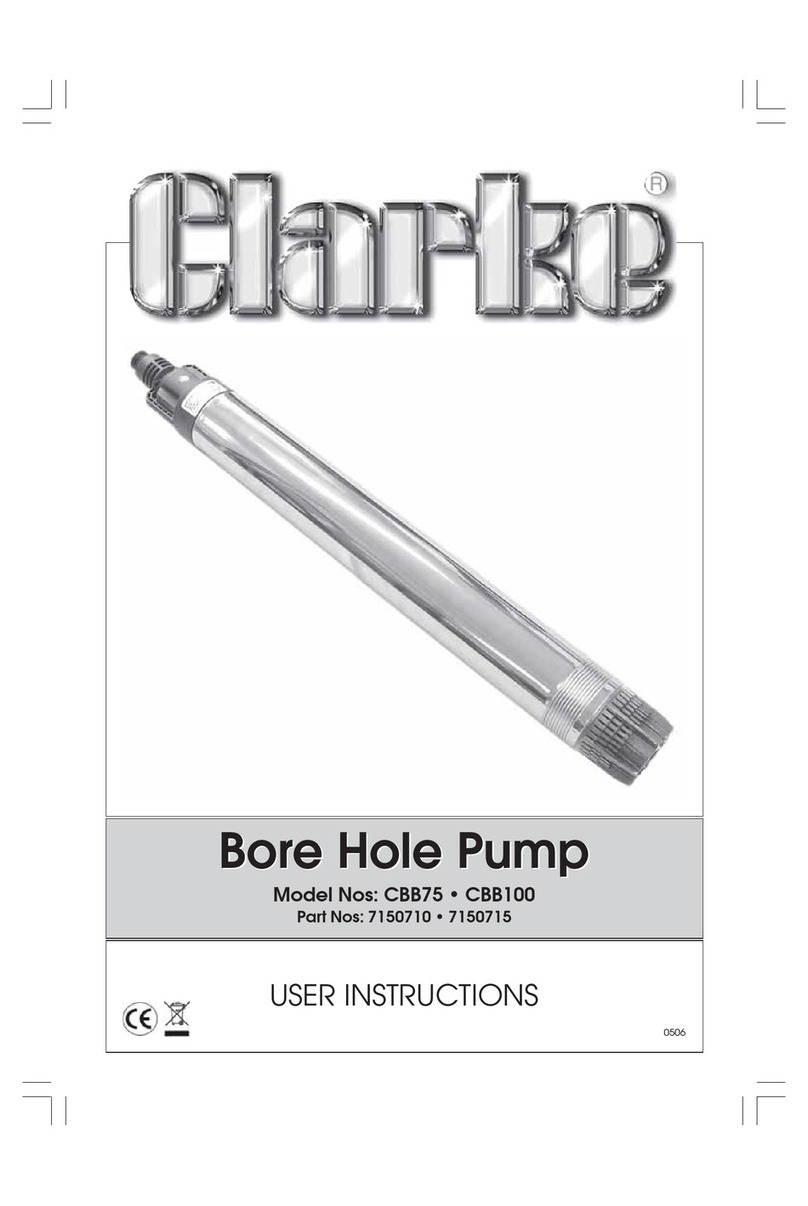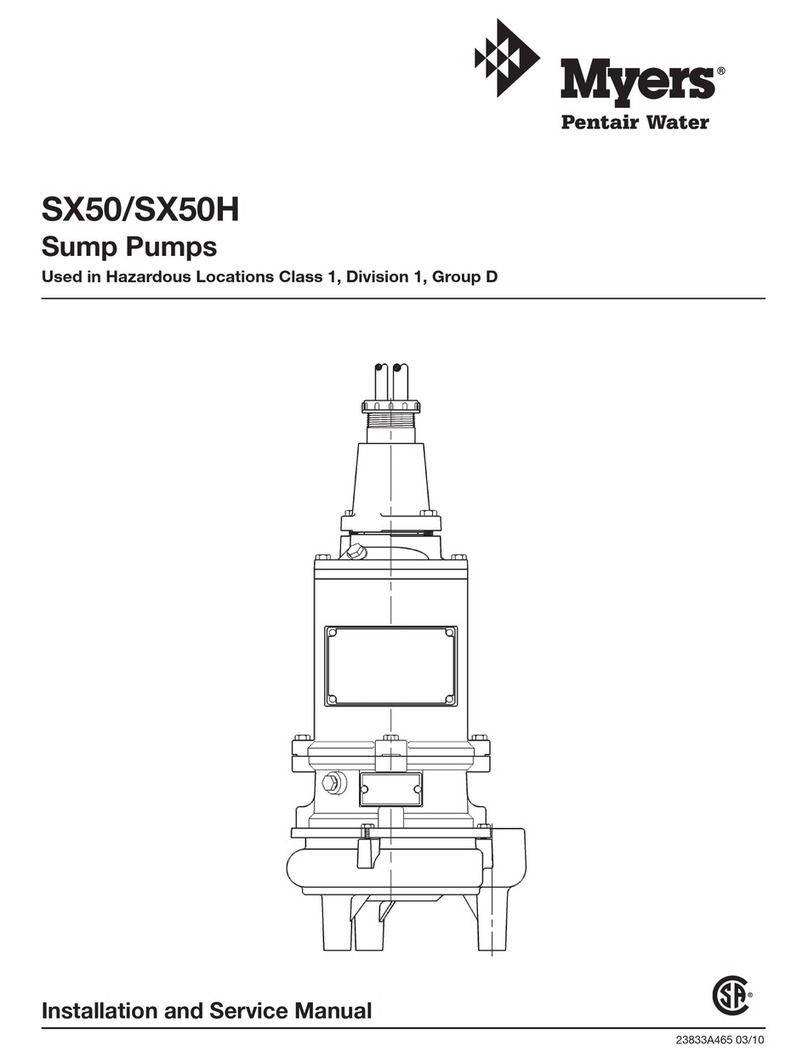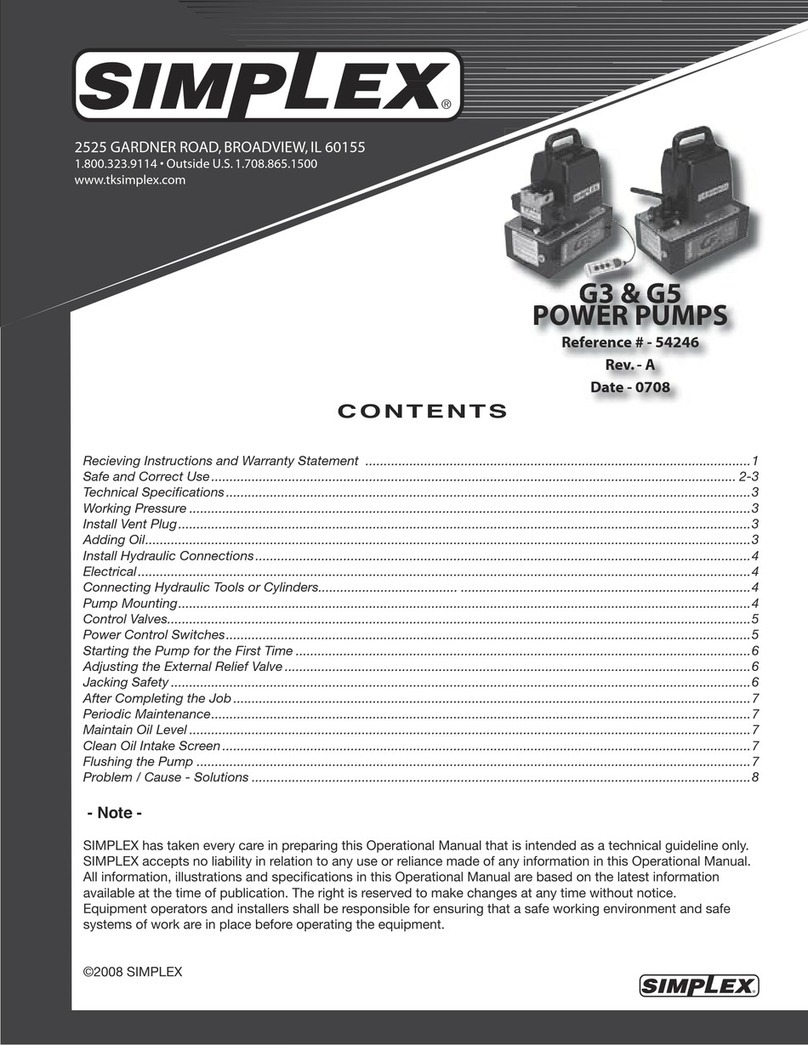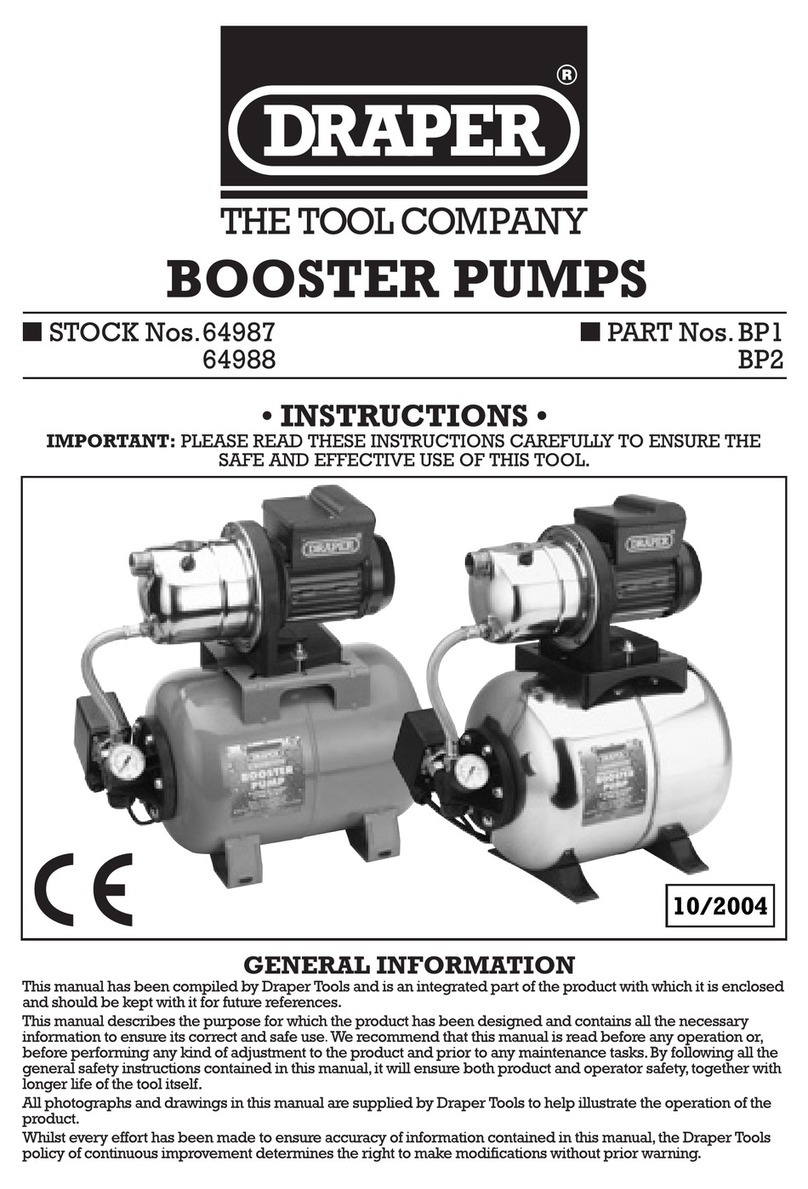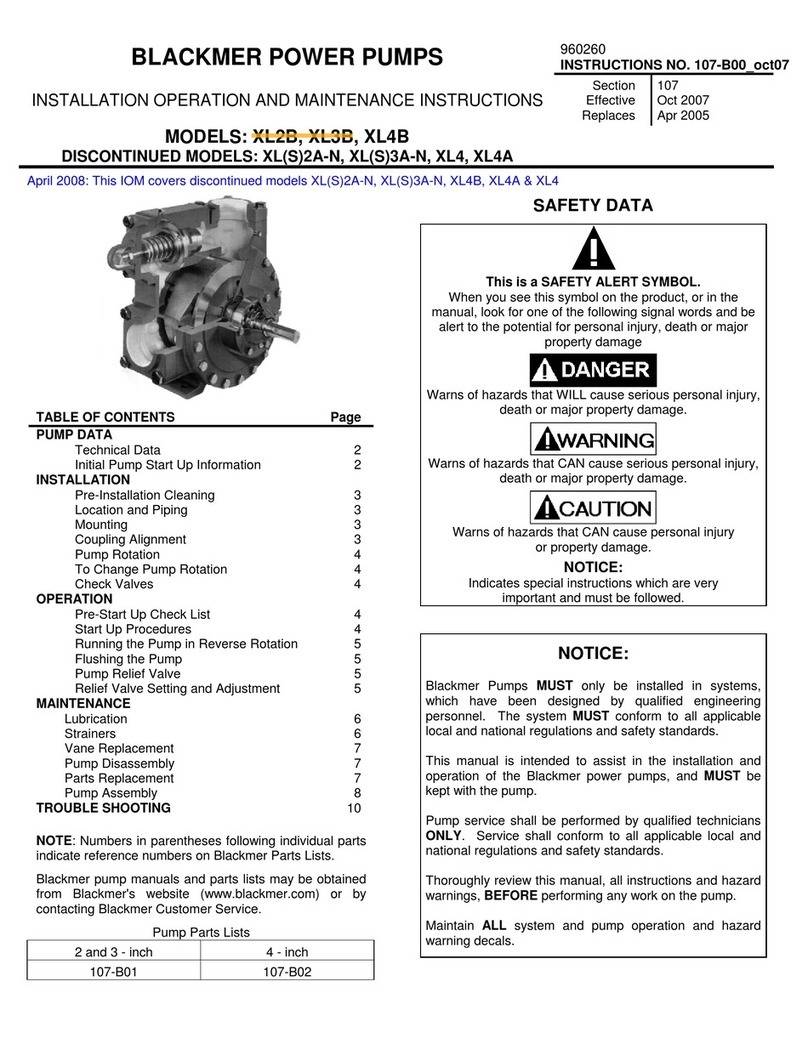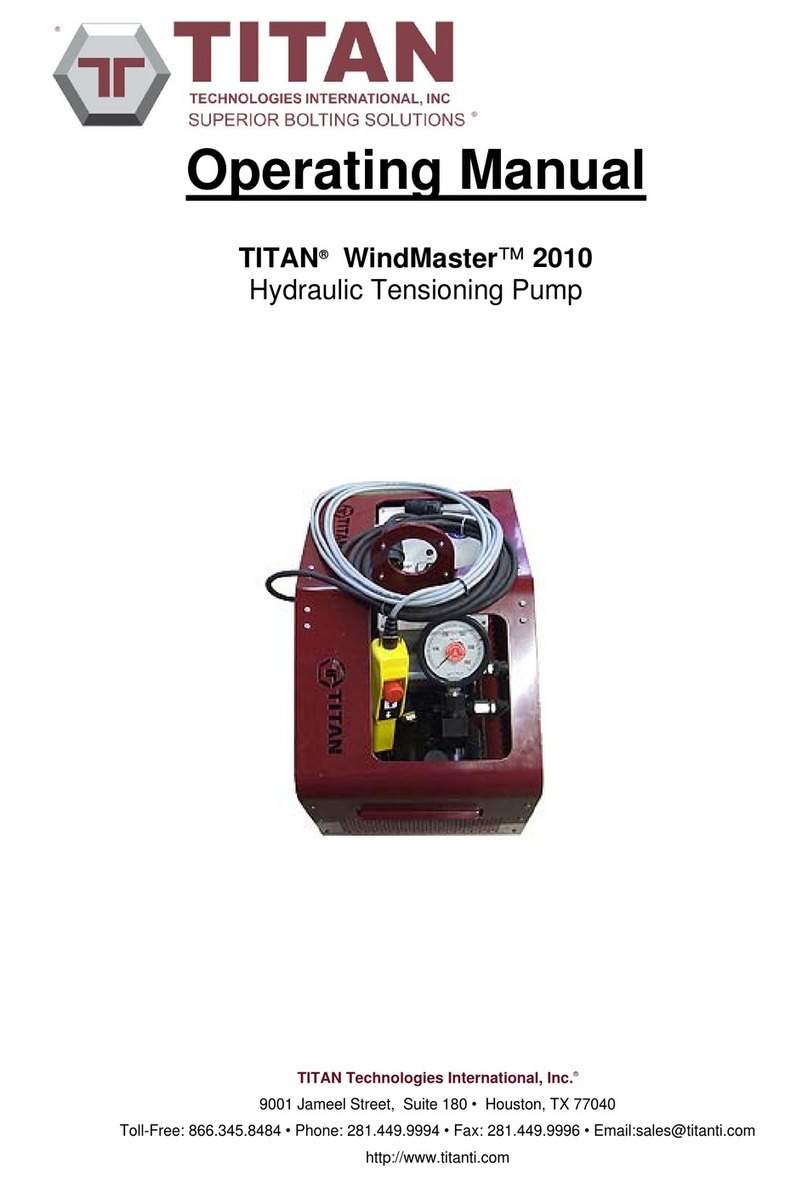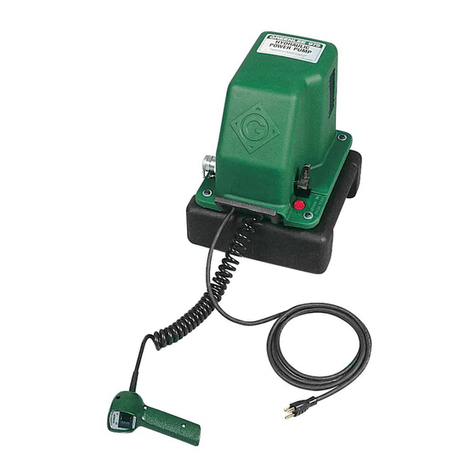Manual M-800 Rev. 6/09Manual M-800 Rev. 6/09 Page 3 of 16
OPERATING PROCEDURE
Filling the Reservoir
NOTE: The pump has been shipped without oil in the reservoir. A high-
quality, approved hydraulic oil has been shipped with the pump in a
separate container. If additional oil is required, use an approved hydraulic
oil only.
1. Cleantheareaaroundthellercaptoremovealldustandgrit.Anydirtordust
intheoilcandamagethepolishedsurfacesandprecision-tcomponentsof
thispump.
2. Retractallcyclinder(s)totheirreturnposition.
3. Removethellercapandinsertacleanfunnelwithalter.Fillthereservoir
withahigh-quality,approvedhydraulicoiltowithin1”ofthecoverplate.
Replacethellercap.
4. Cyclethepump(withthecylinder(s)attached)severaltimes.Retractthe
cylinder(s)andchecktheoillevelinthepumpreservoir.
Electrical Hook-up and Operation
To help avoid personal injury:
• Allelectricalworkmustbedonebyaqualiedelectrician.
• Disconnectthepowersupplybeforeremovingmotorcasingcoveror
performingrepairsormaintenance.
• Allvoltagesmustbewiredforcounterclockwiserotationwhenviewed
fromtheleadendofthemotor.
• Changingthevoltageonthisunitisaninvolved,andifproperly
performed,hazardousprocedure.Consultthemanufacturerforspecic
informationbeforeattemptinganyrewiring.
WARNING
!
1. Theelectricmotorisasinglephase,60cycleandcanbewiredat115or230
volts.
Page 14 of 16
Material Safety Data Sheet
Section 1. Chemical Product and Company
Identifcation.
ProductName:AW Hydraulic Oil ISO 46
Code/PartNumber:9636,9637,9638,9616,
11360,9647
Manufacturer: SPXFluidPower
588511thStreet
Rockford,IL61109,USA
Phone:815-874-5556
CHEMTREC 24 Hr. Emergency Number:
800-424-9300
MaterialUse: Theproductdesignedforusein
heavydutyHydraulicuid
applications.
ValidatedonJanuary,2007
Section 2. Composition and Information on
Ingredients.
Name:Hydrotreatedorseverelyrenedbaseoil
andproprietaryadditivesCAS#:Mixture
%(V/V):100
ExposureLimits:
TLV-TWA(8hr):5mg/cubicm(oilmist)
STLE:10mg/cubicm(oilmist)
ManufacturerRecommendation:Notapplicable
OtherExposureLimits:Consultlocal,state,
provincialorterritorialauthoritiesforacceptable
exposurelimits.
Section 3. Hazardous Identification.
Potentialhealtheffects:Notirritatingtoslightirrita-
tiontoskinandeyeswithnopermanentdamage.
Relativelynon-toxicviaingestion.Thisproducthas
alowvaporpressureandisnotexpectedtopres-
entaninhalationexposureatambientconditions.
Athightemperaturesormechanicalactionsmay
producevaporsormists.Inhalationmaycauseir-
ritationofthebreathingpassages.Seesection11.
Section 4. First Aid Measures
Eye contact:Immediatelyusheyeswithrunning
waterforatleast15minutes,keepingeyelids
open.Seekmedicalattention.
Skin Contact:Removecontaminatedclothing–
launderbeforereuse.Washcontaminatedskin
withrunningwaterandnon-abrasivesoap.Get
medicalattentionifirritationdevelopsorifproduct
isinjectedunderpressureintoorundertheskin.
Inhalation:Removetofreshair.Getmedicalat-
tentionifbreathingdifcultypersists.Ifvictimisnot
breathing,performarticialrespiration.
Ingestion:DONOTinducevomiting.Seekmedi-
calattention.
Section 5. Fire-Fighting Measures
Flammability:Maybecombustiveathightempera-
ture.
Flashpoint:>=200degC(392degF)(COC)
FlammableLimits:Notavailable
Auto-IgnitionTemperature:Notavailable
FireHazardinPresenceofVariousSubstances:
Lowrehazard.Thismaterialmustbeheated
beforeignitionwilloccur.
ExplosionHazardsinPresenceofVariousSub-
stances:Donotcut,weld,drillorpressurizeempty
container.Containersmayexplodeinheatofre.
ProductsofCombustion:variousoxidesofcarbon,
nitrogen,sulfur,smokeandirritatingvaporsfrom
incompletecombustion.
FireFightingMediaInstructions:NAERG96,Guide
171,Substances(lowtomoderatehazard).Iftank,
railcarortankisinvolvedinre,ISOLATEfor800
meters(0.5mile)inalldirections.Shutofffuelto
reifitispossibletodowithouthazard.ifitisnot
possible,withdrawfromareaandletreburnout
undercontrolledconditions.Withdrawimmediately
incaseofrisingsoundfromventingsafetydevice
oranydiscolorationoftankduetore.Coolcon-
tainingvesselswithwatersprayinordertoprevent
pressurebuild-up,autoignitionorexplosion.
SmallFire:useDRYchemicals,foam,waterspray
orCO2.
LargeFire:usewaterspray,fogorfoam.Forsmall
outdoorres,portablereextinguishersmaybe
used.Forallindoorresandsignicantoutdoor
resself-containedbreathingapparatusisre-
quired.Respiratoryandeyeprotectionarerequired
forreghtingpersonnel.
Section 6. Accidental Release Measures
MaterialReleaseorSpill:NAERG96,Guide171,
Substances(lowtomoderatehazard).ELIMINATE
ALLIGNITIONSOURCES.Avoidcontact.Stop
leakifwithoutrisk.Containspill.Absorbwithinert
absorbents.Placeusedabsorbentinclosedmetal
containersforlaterdisposalorburnabsorbentin
suitablecombustionchamber.DONOTFLUSH
TOSEWERS,STREAMSOROTHERBODIESOF
WATER.Checkwithapplicablejurisdictionforspe-
cicdisposalrequirementsofspilledmaterialsand
emptycontainers.Notifytheappropriateauthorities
immediately.
Section 7. Handling and Storage
Handling:Avoidinhalationandskincontact
especiallywhenhandlingusedoil.Keepawayfrom
sourcesofignition.Donotreuseemptycontain-
erswithoutcommercialreconditioning.Practice
goodpersonalhygiene.Washhandsafterhandling
oilandbeforeeating.Launderworkclothesfre-
quently.Discardsaturatedleathergoods.
Storage:Storeintightlyclosedcontainersincool,
dry,isolated,well-ventilatedarea,andawayfrom
incompatibles.
Material Safety Data Sheet Page 1
AW Hydraulic Oil ISO 46

